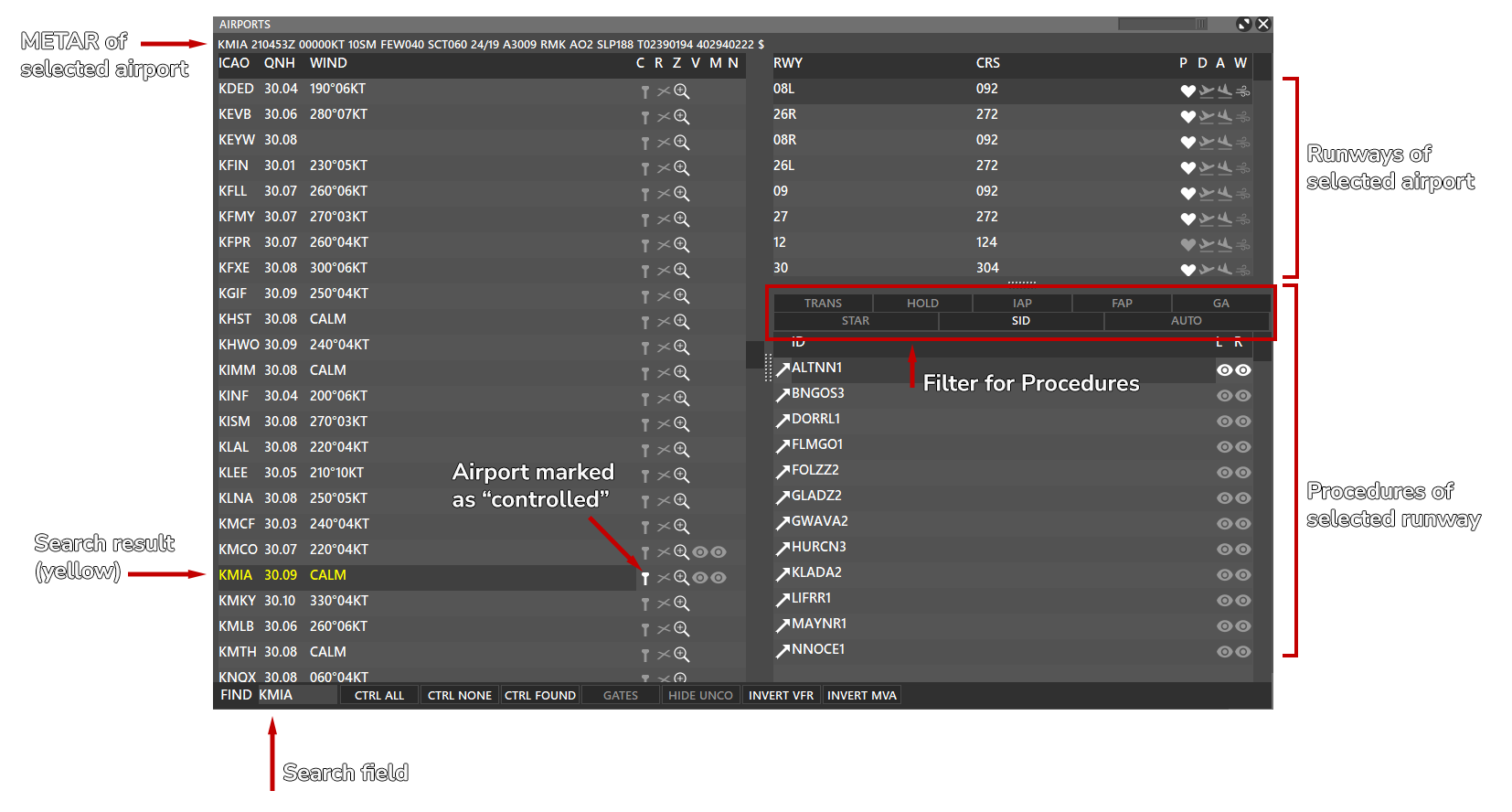Aurora is IVAO's all-in-one ATC client. It allows users to connect as various different ATC positions, observer, or staff.
¶ 1. Installation
- Download Aurora from here
- Install to default installation path
C:/Aurora - Run Aurora
¶ 2. Configuration
- Right click anywhere on the screen and select PREF BAR.
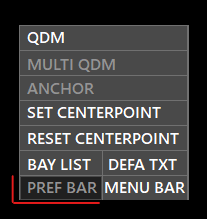

- Configure your PREF BAR as shown in the image above. White font indicates the type of nav data that is turned on.
¶ 3. Sectorfiles
- Select PVD > SECTOR in the MENU BAR
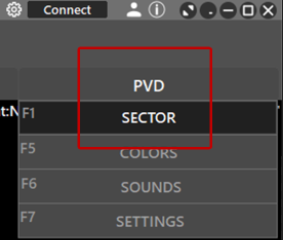
- Select IVAO DOWNLOADS

- In the bottom right, enter ARTCC in the find field.
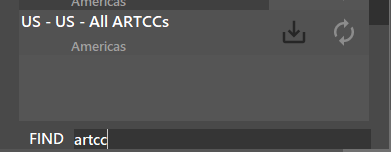
- Click the download button ⬇️ and aurora will fetch the latest version, this might take a while.
- Verify that the auto-update is enabled (colored green)
- All US sectorfiles will now appear on the left side in the Downloads window, each ARTCC starts with KZxx (with a few exceptions).
- A full list of all ARTCC codes can be viewed here.
- Click the folder icon to open one.
¶ 4. Basic Controls
- Zoom | Mouse wheel up/down or hold shift
- Pan | left click drag
- Select Aircraft | Left click on the callsign
- Aircraft context menu | right click on the callsign
¶ 5. Setup Audio Devices
¶ 5.1 Aurora
- Go to PVD > Settings > VHF Radio, set your mic input and output devices.
- Set your PTT button by selecting SET and clicking your keyboard key.
- You can test your PTT by turning on the local test toggle and then hold your PTT button.
- Close settings when completed.
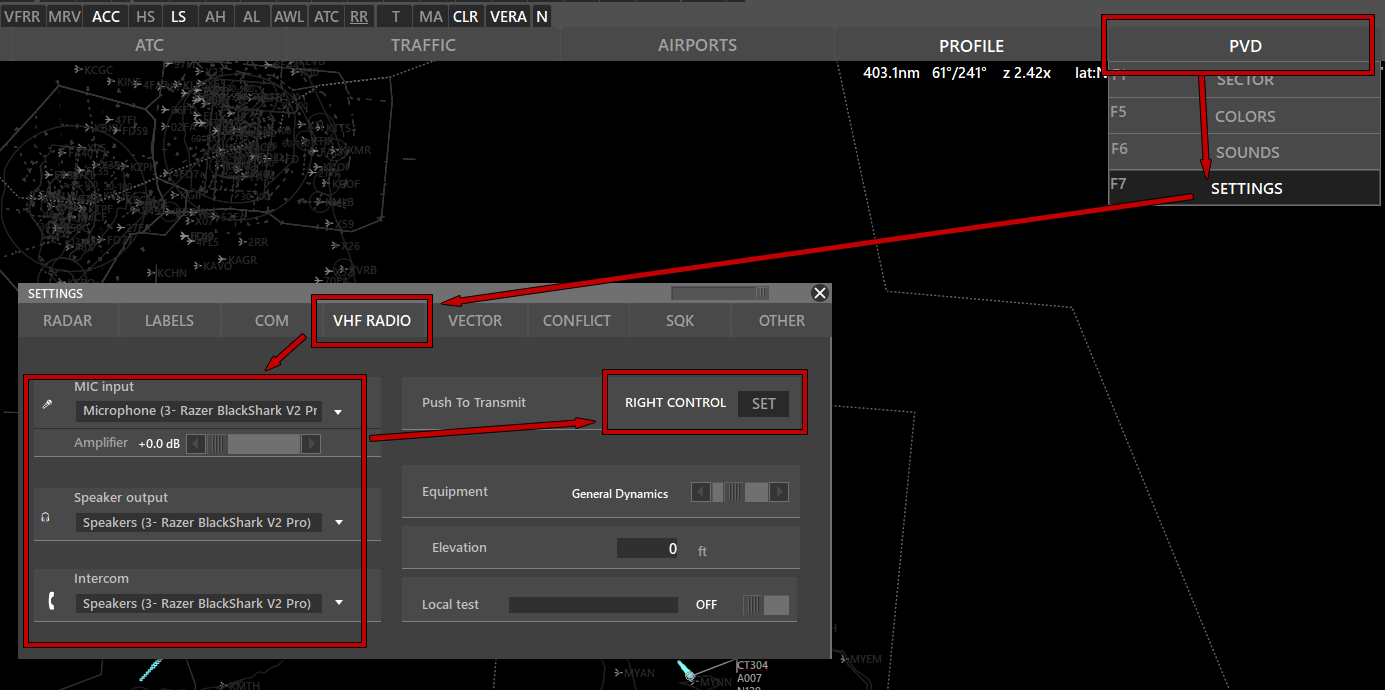
¶ 5.2 Discord
To avoid transmitting in voice chat while talking on frequency you can enable Push to Mute as a separate binding:
- Go to Discord settings
- Select Keybinds
- Select Add a keybind
- Select action: Push to Mute, bind the same key that you use for Aurora.
- Close settings

Now, when using Voice Activty, you will automatically mute your mic while you hold your PTT button.
¶ 6. Sound Notifications
Go to PVD > Sounds
Set following settings:
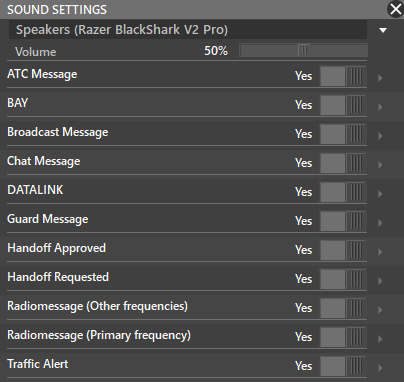
¶ 7. Aurora Settings
Listed below are other recommended settings you should follow:
- Go to PVD > Settings
- Set following RADAR settings:
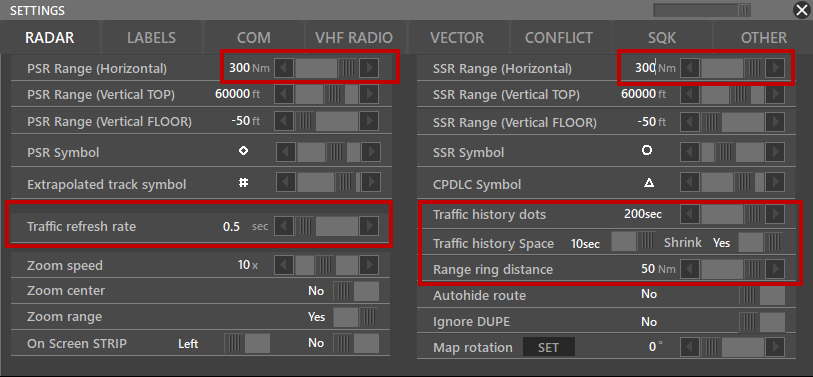
- Set following LABELS settings:
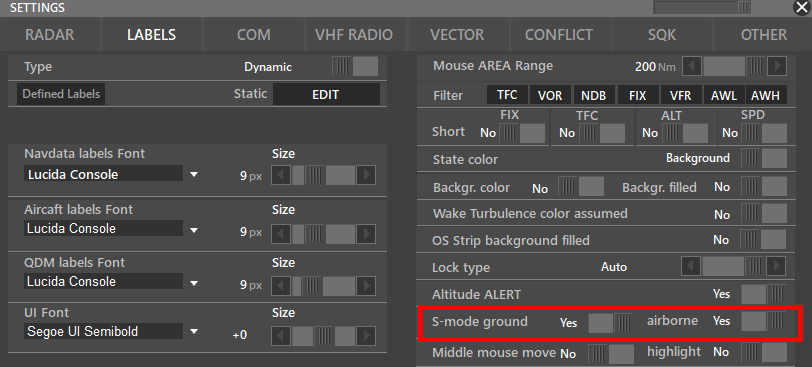
Set following COM settings:
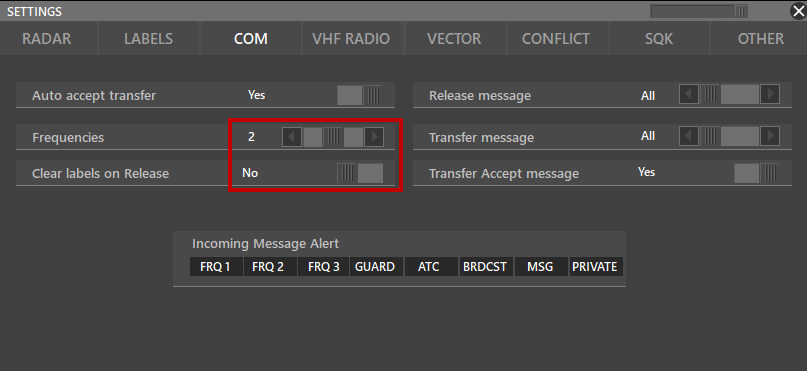
Set following SQUAWK settings:
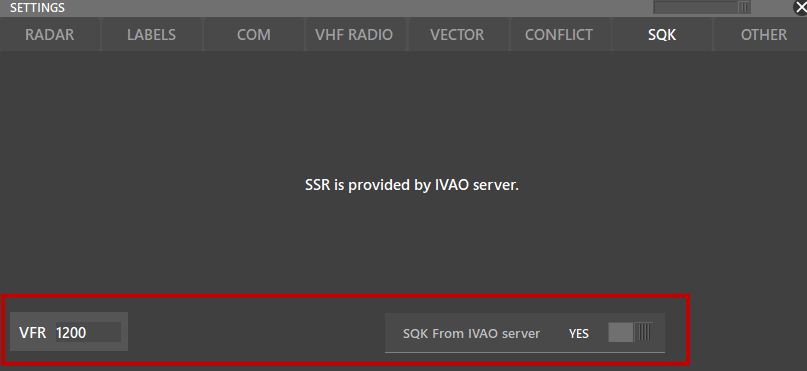
¶ 8. Connect as Observer
- Click on the ⚙️icon on the top right to open the login settings
- Enter Callsign: your initials + “_OBS”
- Turn on Connect Voice
- Click Save
- Click Connect next to the ⚙️ to go online.

- Once connected, the VHF window will be shown.
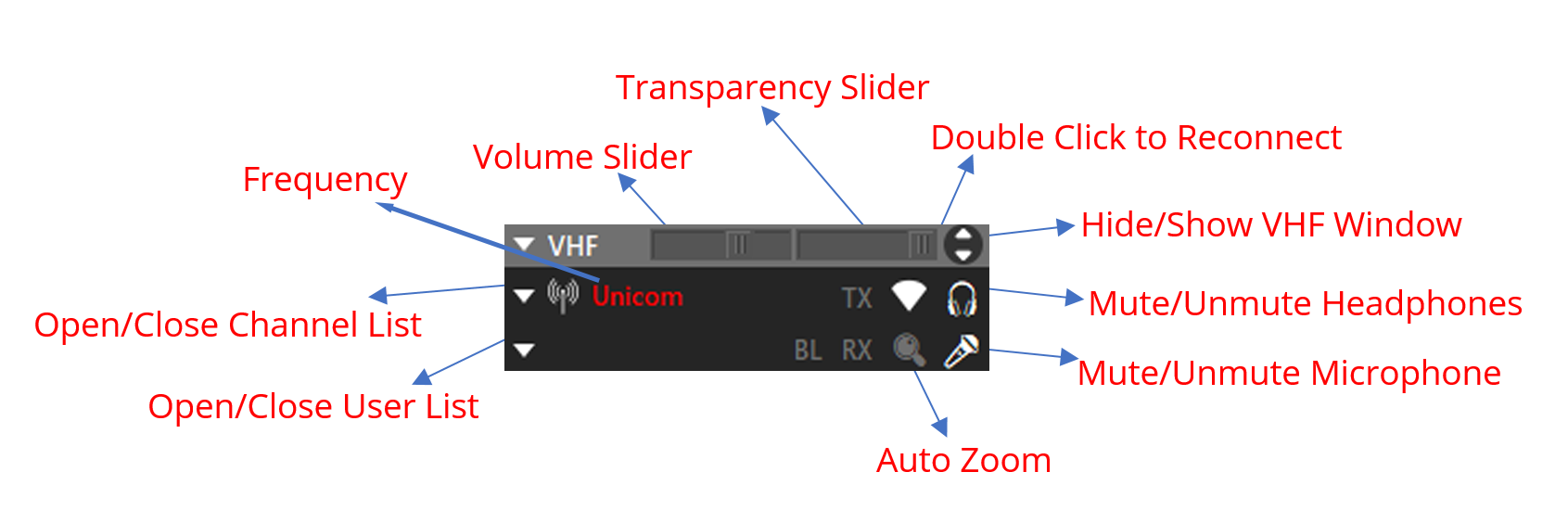
- Select the 2nd 🔽 to see all voice channels
- Double-click on the callsign to join the voice channel
- Select the 3rd 🔽 to expand the channel users
- You will now hear all transmissions
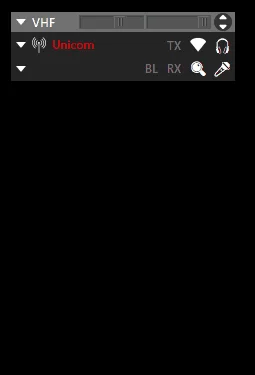
¶ 9. Connect as ATC
- Click on the ⚙️icon on the top right to open the login settings
- Select the callsign by clicking the 🔽 icon
- Click Save, then Connect
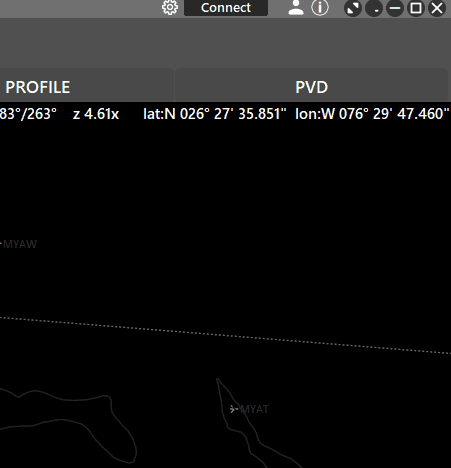
- In the VHF window, verify you see the correct frequency and you are labeled as CA (Channel admin). If not, either double-click on the white radar icon to force-reconnect to the voice channel or disconnect and restart Aurora.
- Your ATIS letter will appear in the top left of your screen now.
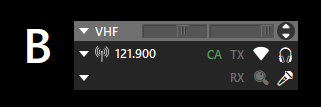
¶ 9. ATIS
In the MENU BAR select ATIS
Enter active runways seperated by a space.
Transition Level 180
Transition Altitude 18000
Enter optional comments in the Remarks section
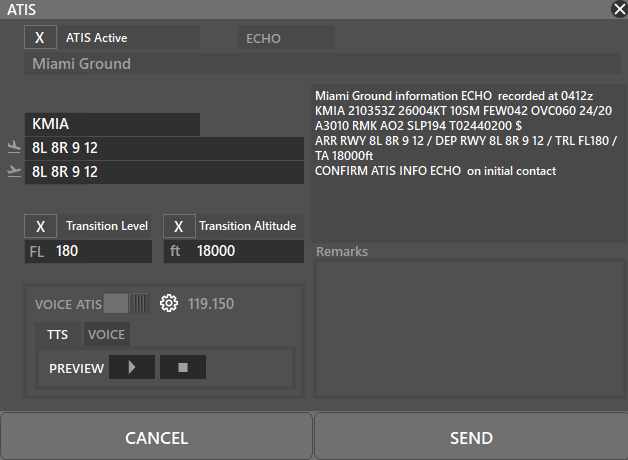
¶ 10. Traffic Manager
In it's most essential form used to view an aircraft flightplan and to assign transponder codes, scratchpad entries (SIDs, STARs, Approaches), altitude, and speed restrictions.
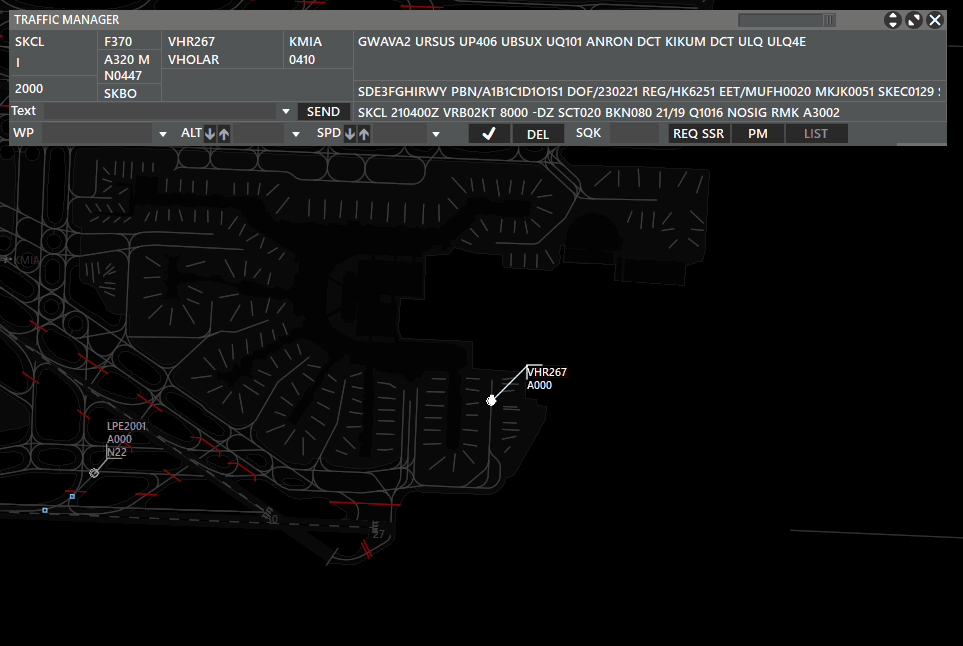
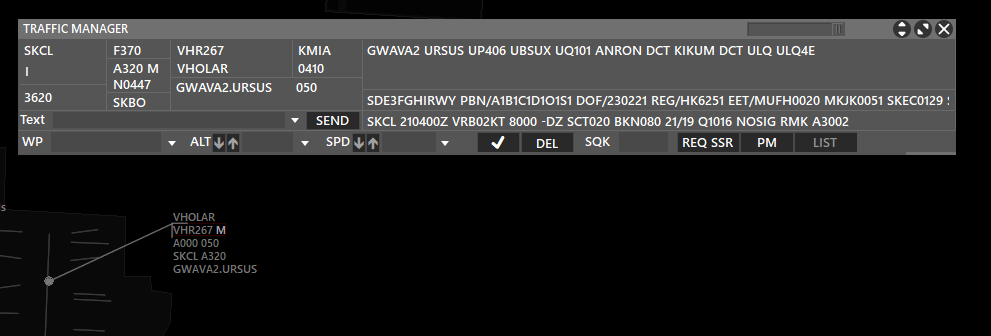
¶ 11. COM Box
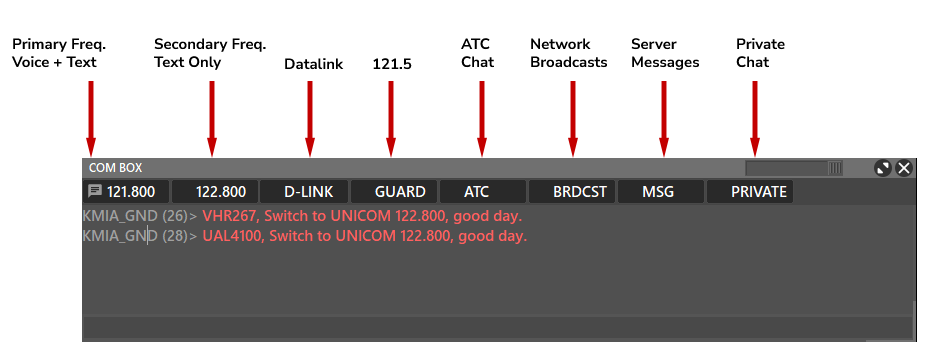
- Display the com box in hte MENU BAR > COM
- Active tab is indicated by a chat bubble
- Following commands can be entered in any tab:
- .c (fix name) - Find any airport, fix, or navaid in your sectorfile. Example:
c. URSUS - .t (callsign) - Find aircraft callsign. Example:
.t AAL2345 - .wx (icao) : Receive METAR. Example:
.wx KJFK - .taf (icao) : Receive TAF. Example:
.taf KLGA - .chat (callsign) Open chat in PRIVATE tab. Example:
.chat KMIA_TWRor.chat UAL445or.chat XA-AOAC
- .c (fix name) - Find any airport, fix, or navaid in your sectorfile. Example:
¶ 12. ATC
- Shows connected ATC, Staff, and Observers.
¶ 13. Airports
This is the Airports Manager. It contains all airports within the selected sectorfile. Including runways, weather, and procedures per runway.
